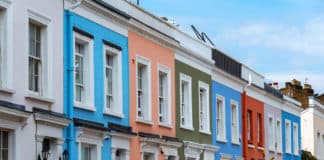When you walk through a city, have you ever wondered why some buildings age gracefully, maintaining their elegance and utility, while others falter under the pressures of time?
The secret isn’t always about advanced technology or exorbitant budgets. Often, the factors ensuring a building’s longevity are simple, timeless principles that balance innovation with practicality.
As you explore this topic, you’ll discover surprising insights into how modern structures are built to endure, leaving a legacy that lasts.
Durability Begins with Materials
The materials used in modern construction play a pivotal role in a building’s resilience. Choosing durable resources like reinforced concrete, tempered glass, or engineered wood ensures the structure can withstand environmental stresses. But it’s not just about strength; sustainability is equally important.
Eco-friendly materials, designed to endure wear while minimising environmental impact, are becoming the go-to choice for architects and builders. This dual focus on longevity and sustainability helps future-proof buildings, making them resistant to both time and climate.
The Power of Thoughtful Design
Good design isn’t just about aesthetics—it’s about functionality. Architects who plan for flexibility and adaptability ensure buildings can evolve with changing needs.
For instance, modular designs allow spaces to be reconfigured without significant structural changes, keeping buildings relevant for decades. Thoughtful design also extends to practical aspects, like ventilation systems and natural lighting, which reduce the need for constant updates and repairs.
Maintenance as a Lifeline
Even the most well-constructed building won’t last without regular upkeep. Maintenance isn’t just about fixing what’s broken; it’s about prevention. Regular inspections, cleaning, and updates to crucial systems like plumbing and wiring ensure the structure remains safe and operational.
In environments requiring high levels of hygiene, solutions such as Simply Cladding offer innovative cladding solutions to maintain clean, durable interiors. By investing in consistent care, building owners can significantly extend the lifespan of their properties.
Adapting to Climate and Environment
Another critical factor in longevity is how well a building suits its environment. For instance, in areas prone to heavy rainfall, water-resistant exteriors and effective drainage systems are essential.
In warmer climates, designs that optimise airflow and use heat-resistant materials help maintain interior comfort without over-reliance on energy-consuming systems.
Buildings that harmonise with their surroundings not only last longer but also reduce the strain on local ecosystems, creating a more sustainable balance.
Technology’s Role in Modern Longevity
Technology, when applied thoughtfully, can significantly enhance a building’s lifespan. Smart systems that monitor structural integrity or optimise energy usage can identify potential issues before they escalate.
Innovations like self-healing concrete or solar panels that integrate seamlessly into design also add value while reducing maintenance demands. However, it’s essential to strike a balance—technology should support longevity, not overshadow the core principles of good construction.
Last Word
Modern buildings that endure do so because of a perfect harmony between materials, design, maintenance, and purpose. As you’ve seen, it’s not always about flashy innovations or cutting-edge features; instead, it’s the thoughtful integration of proven principles with modern needs.
Whether it’s through sustainable practices, adaptive designs, or reliable solutions, the journey to longevity begins with intentional choices that prioritise both present and future needs.

